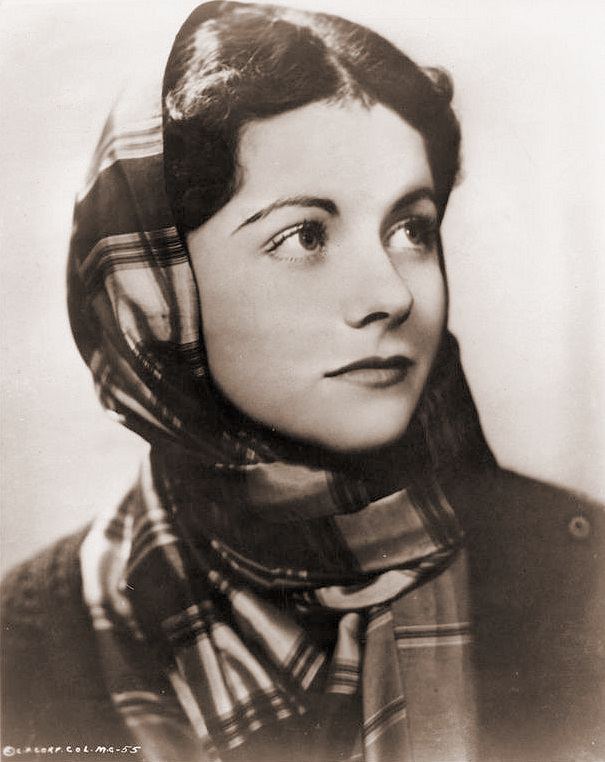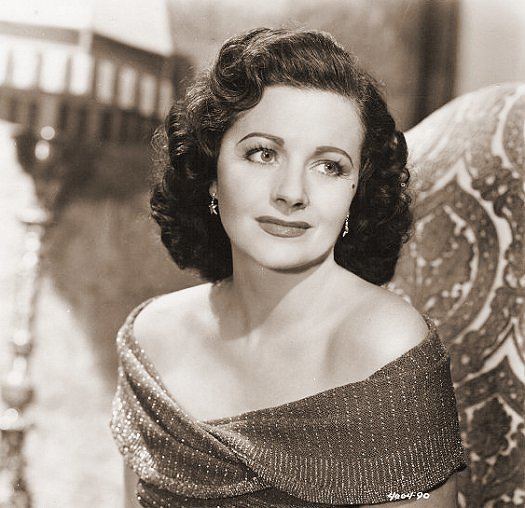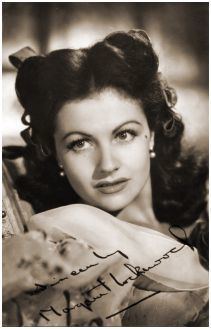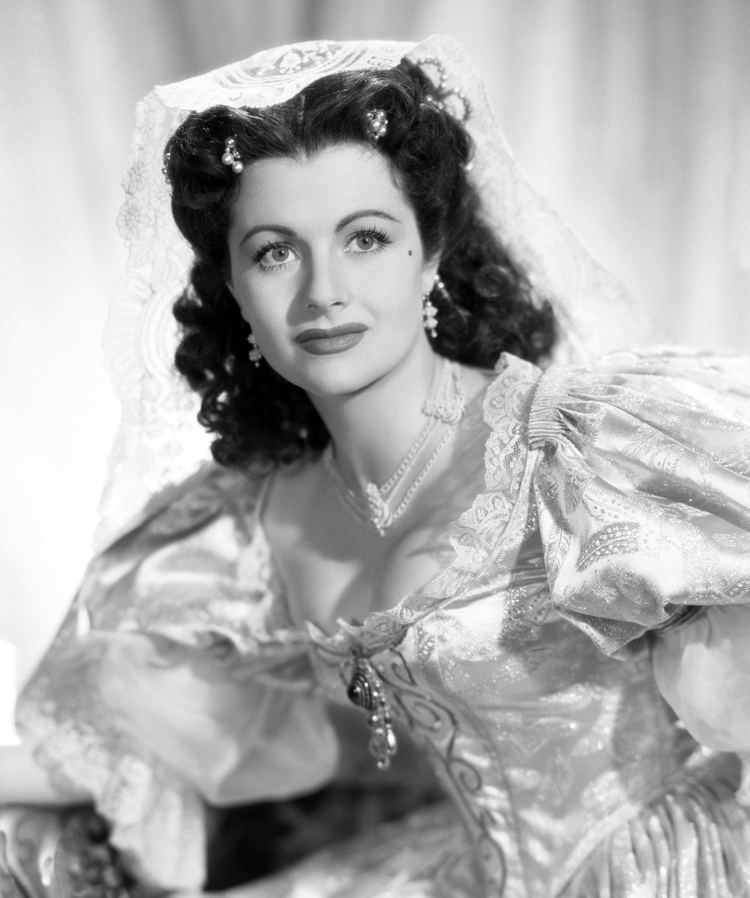Years active 1928–1980 Siblings Lyn Lockwood Children Julia Lockwood | Role Actress Name Margaret Lockwood | |
 | ||
Full Name Margaret Mary Lockwood Day Spouse Rupert Leon (m. 1937–1949) Movies The Lady Vanishes, The Wicked Lady, Night Train to Munich, The Man in Grey, The Slipper and the Rose Similar People | ||
Margaret lockwood plaque unveiling
Margaret Lockwood, CBE (15 September 1916 – 15 July 1990) was an English actress. One of Britain's most popular film stars of the 1930s and 1940s, her film appearances included The Lady Vanishes (1938), Night Train to Munich (1940), The Man in Grey (1943), and The Wicked Lady (1945). She was nominated for the BAFTA Award for Best British Actress for the 1955 film Cast a Dark Shadow. She also starred in the 1970s television series Justice (1971–74)
Contents
- Margaret lockwood plaque unveiling
- Margaret lockwood interviewed on tv
- Early life
- Career
- Films
- Gaumont British
- British Stardom Bank Holiday and The Lady Vanishes
- US films
- Return to Britain
- The Man in Grey
- The Wicked Lady
- Contract with Rank
- Herbert Wilcox
- Later career
- Personal life
- Unmade films
- Theatre credits
- Awards
- Box office popularity
- Filmography
- References

Margaret lockwood interviewed on tv
Early life

Margaret Mary Day Lockwood was born on 15 September 1916 in Karachi, British India, to Henry Francis Lockwood, an English administrator of a railway company, and his Scottish third wife Margaret Eveline Waugh. She returned to England in 1920 with her mother, brother 'Lyn' and half-brother Frank, and a further half-sister 'Fay' joined them the following year, but her father remained in Karachi, visiting them infrequently. She also had another half-brother, John, from her father's first marriage, brought up by his mother in England. Lockwood attended Sydenham High School for girls, and a ladies' school in Kensington, London.

She began studying for the stage at an early age at the Italia Conti, and made her debut in 1928, at the age of 12, at the Holborn Empire where she played a fairy in A Midsummer Night's Dream. In December of the following year, she appeared at the Scala Theatre in the pantomime The Babes in the Wood. In 1932 she appeared at the Theatre Royal, Drury Lane in Cavalcade.
Career

In 1933, Lockwood enrolled at the Royal Academy of Dramatic Art in London, where she was seen by a talent scout and signed to a contract. In June 1934 she played Myrtle in House on Fire at the Queen's Theatre, and on 22 August 1934 appeared as Margaret Hamilton in Gertrude Jenning's play Family Affairs when it premiered at the Ambassadors Theatre; Helene Ferber in Repayment at the Arts Theatre in January 1936; Trixie Drew in Henry Bernard's play Miss Smith at the Duke of York's Theatre in July 1936; and back at the Queen's in July 1937 as Ann Harlow in Ann's Lapse.
Films
Lockwood entered films in 1934, and in 1935 she appeared in the film version of Lorna Doone. For British Lion she was in The Case of Gabriel Perry (1935), then was in Honours Easy (1935) with Greta Nissen and Man of the Moment (1935) with Douglas Fairbanks Jnr. These were standard ingenue roles. She was the female love interest in Midshipman Easy (1935), directed by Carol Reed, who would become crucial to Lockwood's career. She had the lead in Someday (1935), a quota quickie directed by Michael Powell and in Jury's Evidence (1936), directed by Ralph Ince.
Lockwood had a small role in The Amateur Gentleman (1936), another with Fairbanks. Her profile rose when she appeared opposite Maurice Chevalier in The Beloved Vagabond (1936)
She followed it with Irish for Luck (1936) and The Street Singer (1937). She had a small role in Who's Your Lady Friend? (1937), again for Carol Reed and was in Melody and Romance (1937).
Gaumont British
Gaumont British were making a film version of the novel Doctor Syn, starring George Arliss and Anna Lee with director Roy William Neill and producer Edward Black. Lee dropped out and was replaced by Lockwood. Lockwood so impressed the studio with her performance – particularly Black, who became a champion of hers – she signed a three-year contract with Gainsborough Pictures in June 1937.
For Black and director Robert Stevenson she supported Will Fyffe in Owd Bob (1938), opposite John Loder.
British Stardom: Bank Holiday and The Lady Vanishes
Lockwood then had her best chance to-date, being given the lead in Bank Holiday, directed by Carol Reed and produced by Black. This movie was a hit and launched Lockwood as a star. Even more popular, was her next movie, The Lady Vanishes, directed by Alfred Hitchcock, produced by Black and co-starring Michael Redgrave. Hitchcock was greatly impressed by Lockwood, telling the press:
She has an undoubted gift in expressing her beauty in terms of emotion, which is exceptionally well suited to the camera. Allied to this is the fact that she photographs more than normally easily, and has an extraordinary insight in getting the feel of her lines, to live within them, so to speak, as long as the duration of the picture lasts. It is not too much to expect that, in Margaret Lockwood, the British picture industry has a possibility of developing a star of hitherto un-anticipated possibilities.
She followed this with A Girl Must Live, a musical comedy about chorus girls for Black and Reed. It was one of a series of films made by Gaumont aimed at the US market.
US films
Gaumont British had distribution agreements with 20th Century Fox in the US and they expressed an interest in borrowing Lockwood for some films. She travelled to Los Angeles and was put to work supporting Shirley Temple in Susannah of the Mounties (1939), set in Canada, opposite Randolph Scott. She was borrowed by Paramount for Rulers of the Sea (1939), with Will Fyffe and Fairbanks Jnr. Paramount indicated a desire to use Lockwood in more films but she decided to go home.
Return to Britain
Lockwood returned to Britain in June 1939. She was meant to make film versions of Rob Roy and The Blue Lagoon but both projects were cancelled with the advent of war. Instead, she played the role of Jenny Sunley, the self-centred, frivolous wife of Michael Redgrave's character in The Stars Look Down for Carol Reed.
She was meant to be reunited with Reed and Redgrave in Girl in the News (1940) but Redgrave dropped out and was replaced by Barry K. Barnes: Black produced and Sidney Gilliat wrote the script.
There was a three-in-a-row scenario with Reed, Night Train to Munich (1940), an attempt to repeat the success of The Lady Vanishes with the same screenwriters (Launder and Gilliat) and characters of Charters and Caldicott. Rex Harrison was the male star.
Quiet Wedding (1941) was a comedy directed by Anthony Asquith. Alibi (1942) was a thriller.
The Man in Grey
Lockwood was well established as a middle-tier name. What made her a front rank star was The Man in Grey (1943), the first of what would be known as the Gainsborough melodramas. Lockwood wanted to play the part of Clarissa but producer Edward Black cast her as the villainous Hesther. She was featured alongside Phyllis Calvert, James Mason and Stewart Granger for director Leslie Arliss. The film was a massive hit, one of the biggest in 1943 Britain, and made all four lead actors into top stars.
She appeared in two comedies for Black: Dear Octopus (1943) with Michael Wilding from a play by Dodie Smith, and Give Us the Moon (1944), with Vic Oliver directed by Val Guest. Much more popular than either of these was another melodrama with Arliss and Granger, Love Story (1944), where she played a terminally ill pianist.
Lockwood was reunited with James Mason in A Place of One's Own (1945), playing a housekeeper possessed by the spirit of a dead girl, but the film was not a success. I'll Be Your Sweetheart (1945) was a musical with Guest and Vic Oliver.
The Wicked Lady
Lockwood had the biggest success of her career to-date with the title role in The Wicked Lady (1945), opposite Mason and Michael Rennie for director Arliss. The film was the most popular movie at the British box office in 1946. In 1946, Lockwood gained the Daily Mail National Film Awards First Prize for most popular British film actress.
She was a murderess in Bedelia (1946), which did not perform as well, although it was popular in Britain.
Contract with Rank
In July 1946, Lockwood signed a six-year contract with Rank to make two movies a year. The first of these was Hungry Hill (1947), an expensive adaptation of the novel by Daphne du Maurier which was not the expected success at the box office.
More popular was Jassy (1947), the seventh biggest hit at the British box office in 1947. In 1947, she refused to appear in Roses for Her Pillow (which became Once Upon a Dream) and was put on suspension. It was the last of "official" Gainsborough melodramas – the studio had come under control of J. Arthur Rank who disliked the genre.
She was a warden in The White Unicorn (1947), a melodrama. Look Before You Love (1948) was a thriller. A change of pace came with the comedy Cardboard Cavalier (1949), with Lockwood playing Nell Gwynee opposite Sid Field. The film was a critical and box office disappointment. "I was terribly distressed when I read the press notices of the film", wrote Lockwood.
She was in another melodrama, Madness of the Heart (1949), but the film was not a particular success. She returned to the stage in a record-breaking national tour of Noël Coward's Private Lives in 1949, and also played Eliza Doolittle in George Bernard Shaw's Pygmalion at the Edinburgh Festival of 1951, and the title role in J. M. Barrie's Peter Pan in 1949, 1950 and 1957 (the last with her daughter Julia Lockwood as Wendy).
She returned to film-making after an 18-month absence to star in Highly Dangerous (1950), a comic thriller in the vein of Lady Vanishes written expressly for her by Eric Ambler and directed by Roy Ward Baker. It was not popular and Lockwood soon ended her contract with the Rank organisation.
Herbert Wilcox
In 1952, Lockwood signed a two picture a year contract with Herbert Wilcox at $112,000 a year, making her the best paid actress in British films. The association began well with Trent's Last Case (1952) with Michael Wilding and Orson Welles which was popular. However, the next two were commercial disappointments: Laughing Anne (1953) and Trouble in the Glen (1954). She made no more films with Wilcox.
Lockwood appeared in a thriller, Cast a Dark Shadow (1955) with Dirk Bogarde for director Lewis Gilbert. Gilbert later said "It was reasonably successful, but, by then, Margaret had been in several really bad films and her name on a picture was rather counter-productive."
Later career
As her popularity waned in the 1950s, she returned to occasional performances on the West End stage and appeared on television. Her subsequent long-running West End hits include an all-star production of Oscar Wilde's An Ideal Husband (1965–66, in which she played the villainous Mrs Cheveley), W. Somerset Maugham's Lady Frederick (1970), Relative Values (Noël Coward revival, 1973) and the thrillers Spider's Web (1955, written for her by Agatha Christie), Signpost to Murder (1962) and Double Edge (1975).
In 1969 she starred as barrister Julia Stanford in the TV play Justice is a Woman. This inspired the Yorkshire Television series Justice, which ran for three seasons (39 episodes) from 1971 to 1974, and featured her real-life partner, John Stone, as fictional boyfriend Dr Ian Moody. Lockwood's role as the feisty Harriet Peterson won her Best Actress Awards from the TV Times (1971) and The Sun (1973). In 1975, film director Bryan Forbes persuaded her out of an apparent retirement from feature films, to play the role of the Stepmother in what would be her last feature film, The Slipper and the Rose. This film also included final feature film appearances by Kenneth More and Edith Evans.
Her last professional appearance was as Queen Alexandra in Royce Ryton's stage play Motherdear (Ambassadors Theatre, 1980).
Margaret Lockwood was appointed a Commander of the Order of the British Empire (CBE) in the New Year Honours of 1981.
She was the subject of This Is Your Life in December 1963. She was a guest on the British Broadcasting Corporation's radio show Desert Island Discs on 25 April 1951.
Personal life
Lockwood married Rupert Leon in 1937 (divorced in 1950). She lived her final years in seclusion in Kingston upon Thames, dying at the Cromwell Hospital, Kensington, London from cirrhosis of the liver, aged 73. Her body was cremated at Putney Vale Crematorium. She was survived by her daughter, the actress Julia Lockwood (née Margaret Julia Leon, born 1941).
Unmade films
Theatre credits
Awards
Box-office popularity
Various polls of exhibitors consistently listed Lockwood among the most popular stars of her era:
